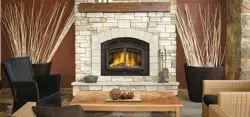Loading ...
Loading ...
Loading ...

W415-2044 / C / 08.20.21
EN
44
maintenance
9.3 creosote formation and removal
When wood is burned slowly, it produces tar and other organic vapors, which combine with expelled moisture
to form creosote. The creosote vapors condense in the relatively cooler chimney fl ue or a slow-burning fi re. As a
result, creosote residue accumulates on the fl ue lining. When ignited, this creosote makes an extremely hot fi re.
The chimney connector and chimney should be inspected at least once every two months during the heating
season to determine if a creosote buildup has occurred.
If creosote has accumulated, it should be removed to reduce the risk of a chimney fi re.
9.4 run-away or chimney fi re
!
WARNING
• A chimney fi re can permanently damage your chimney system. This damage can only be repaired by replacing
the damaged component parts. Chimney fi res are not covered by the lifetime limited warranty.
• Using incorrect fuel, or small fuel pieces which would normally be used as kindling.
• Creosote build up in chimney.
• Leaving the door ajar too long and creating extreme temperatures as the air rushes in the open door.
• If equipped, burning your appliance with the ash plug not securely seated.
• Do not burn treated, painted, artifi cial, paper or processed wood logs, coal, charcoal, coloured paper or
cardboard.
• Have chimney regularly cleaned.
• Be careful not to over-fi re the appliance by leaving the door open too long after initial start-up. A
thermometer on the chimney connector and/or appliance top helps to indicate the appliance operating
temperature.
• If equipped, always operate the appliance with the ash plug properly installed.
• Close glass door and air control (and damper, when equipped).
• Have a well understood plan for evacuation and a place outside for everyone to meet. Prepare to evacuate
to ensure everyone’s safety.
• Call local fi re department. Have a fi re extinguisher handy. Contact local authorities for further information on
how to handle a chimney fi re.
• After the chimney fi re is out, clean and inspect the chimney or chimney liner for stress and cracks prior to
lighting another fi re. Also check combustibles around the chimney and the roof.
Loading ...
Loading ...
Loading ...
